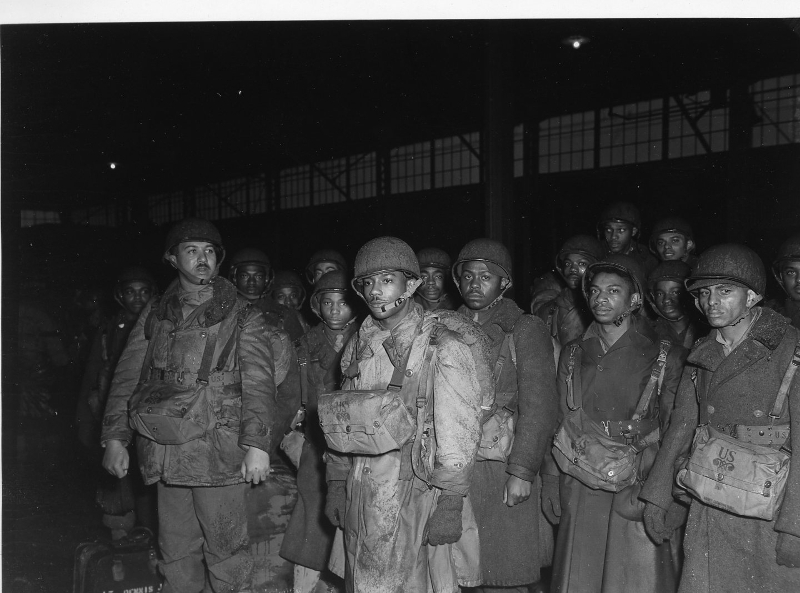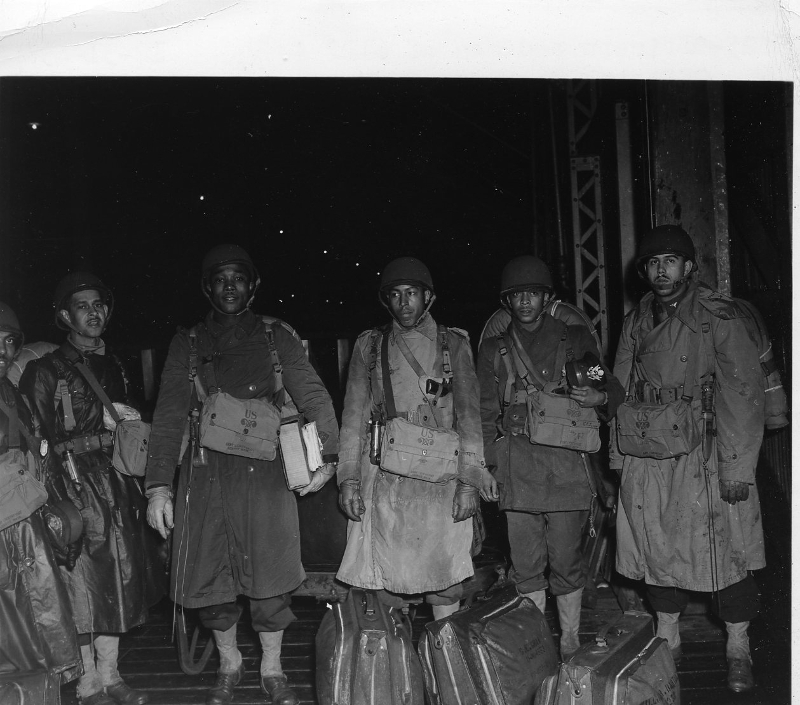During the second world war, the Hampton Roads Port of Embarkation saw over a million people pass through its piers. Most of these were enlisted men, Some were women of the WAC or nurses. A few comedians, a few actors. Most of the people in these photographs are unknown outside of their own families and communities, shot only for visual documentation of everything that transpired at HRPE. Sometimes, there are unexpected (and sometimes mislabeled) gems in the mix. This past week, we found photographs of the 332nd Fighter Group, the Tuskegee Airmen, on their way to what appears to have been their first assignment overseas. Three of these men have their names provided, as well. We have reached out to Tuskegee University and the Tuskegee Airmen Inc. for help in identifying the many other men in these photographs.

The United States military was still segregated during the war, and African Americans in the service were typically kept to labor and support roles. The Tuskegee Airmen were some of the very few exceptions, and were the first African Americans to fly for the U.S. Military. The exclusive and elite Tuskegee program began in 1941 at Tuskegee University in Alabama with the 99th Pursuit Squadron, and eventually expanded into other squadrons. Only the 99th and the 332nd ever saw combat, beginning in 1943 and 1944 respectively.

The images we have found of the Airmen (three so far) date from the 31st of December, 1943, and show the 332nd waiting for embarkation, on a cold, rainy night. Their faces show a variety of emotions from hope to apprehension, to boredom with waiting. In a month they would be in Italy, flying bomber escort missions and gaining respect as some of the best pilots in the Army Air Forces. Their skill and combat record is considered to be one of the factors that contributed to the desegregation of the military in 1948.
